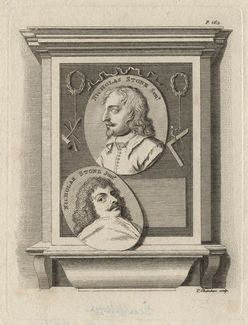
in St Martin-in-the-Fields, London




Nicholas Stone (1586/87[1] – 24 August 1647) was an English sculptor and architect. In 1619 he was appointed master-mason to James I, and in 1626 to Charles I.
During his career he was the mason responsible for not only the building of Inigo Jones' Banqueting House, Whitehall,[2] but the execution of elaborate funerary monuments for some of the most prominent of his era that were avant-garde by English standards. As an architect he worked in the Baroque style providing England with some of its earliest examples of the style that was not to find favour in the country for another sixty years, and then only fleetingly.
He worked in a context where most sculptors in stone were "mason-sculptors", in modern terms combining sculpture with architecture. The quality of his sculptural work is variable, probably because much of it was done by his workshop colleagues. Netherlandish influence was dominant in English sculpture, and in Stone's training, but the importation of classical antiquities by collectors influenced his later work. There continued to be few sculpture commissions other than tombs in England during his career, and he developed the English types of the previous century.[3]
- ^ Howard Colvin, A Biographical Dictionary of British Architects, 1600-1840 3rd ed. (Yale University Press) 1995, s.v. "Stone, Nicholas", gives 1587 as his birth year.
- ^ William Cure, the King's Master Mason having declined the demanding task (Colvin 1995).
- ^ Whinney, 67-80